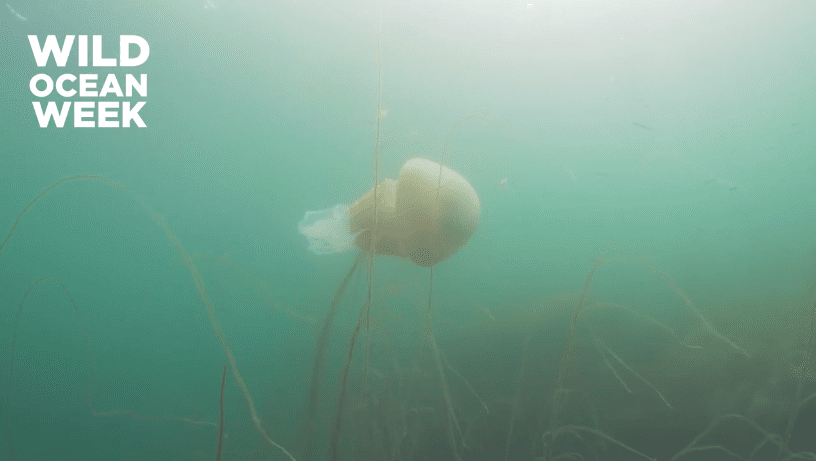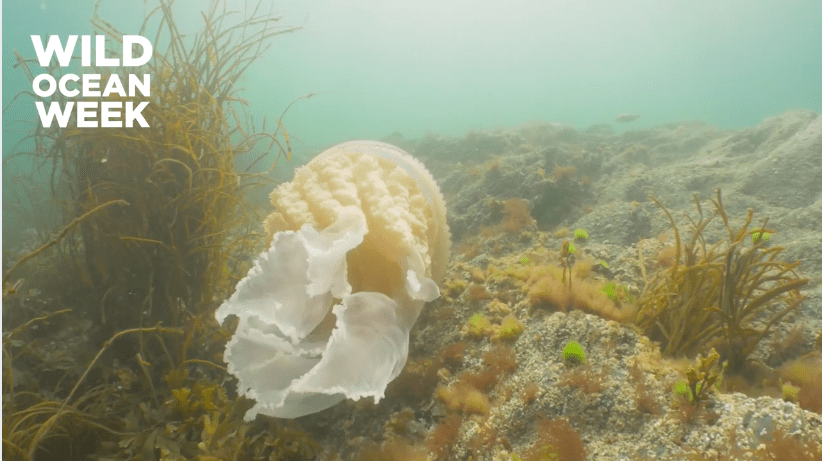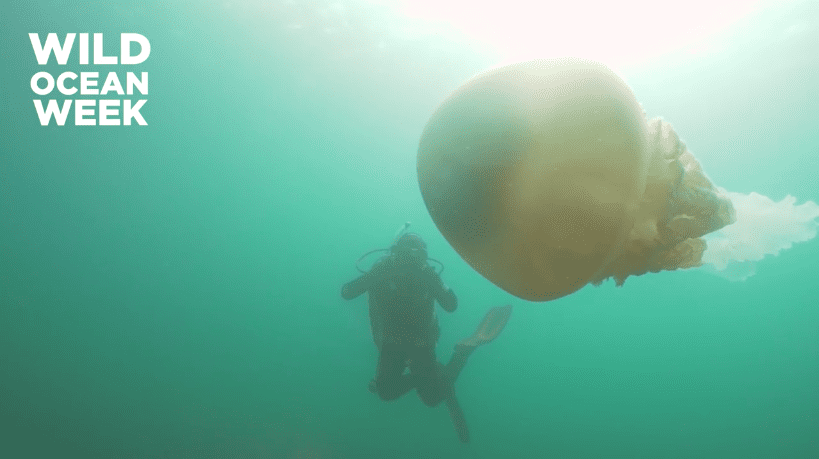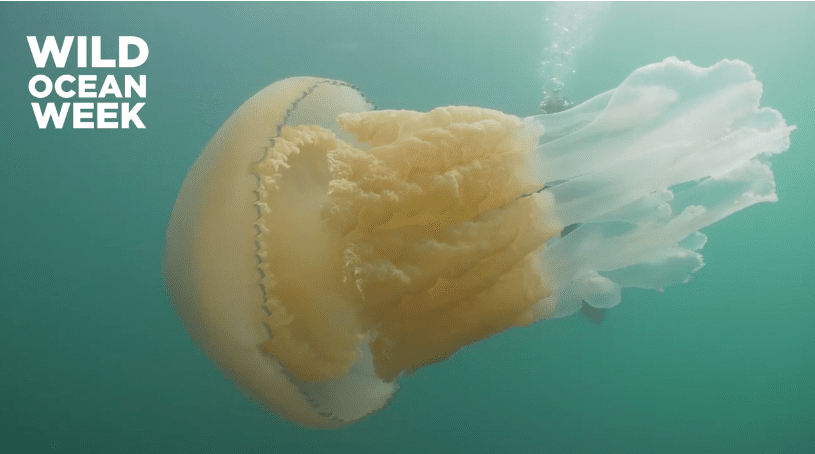Only people brave enough to spend time without immediate access to unlimited oxygen get to see the crazy creatures that lurk under the surface of the sea.
Luckily for the rest of us, some of those people go into the deep armed with cameras – which is exactly how Dan Abbott and Lizzie Daly dove into the Celtic Sea the day they ran across a giant barrel jellyfish (Rhizostoma pulmo). How giant?
It was the size of person.
The giant barrel jellyfish is not the largest species of jellyfish in the world (that title belongs to the lion’s mane jellyfish, which can grow up to 120 feet from top to the end of the tentacles – about the length of a blue whale), but it is the largest species anyone could expect to run into off the Cornish coast.
While the lion’s mane jellyfish has a sting full of neurotoxins, the giant barrel jellyfish’s translucent, frilly tentacles are mostly harmless (aside from a minor sting).
The one captured on film by Abbott, an underwater cinematographer, was about 3 feet wide and 6 feet long.
Day 7 WILD OCEAN WEEK  | GIANT Barrel Jellyfish
| GIANT Barrel Jellyfish
Diving with a giant barrel jellyfish in Cornwall to celebrate the end of #WildOceanWeek  Massive throw to Sharkman Dan for the wonderful footage Spend 2 minutes of the end of WILD OCEAN WEEK watching this beautiful moment where I come face to face with a barrel jellyfish THE SAME SIZE AS ME while diving off of the coast of Falmouth
Massive throw to Sharkman Dan for the wonderful footage Spend 2 minutes of the end of WILD OCEAN WEEK watching this beautiful moment where I come face to face with a barrel jellyfish THE SAME SIZE AS ME while diving off of the coast of Falmouth  So excited that I actually say 'Barrel Fish' instead of Barrel Jellyfish ha!!!What an INCREDIBLE experience – both Dan and I have never seen anything like it. I couldn't think of a better way to finish the week in celebrating our incredible oceans.For anybody who is in Cornwall do come on down to Maenporth tomorrow at 12pm for a beach clean. There should be a good crowd of us rounded up now so it will be fun – and it will be followed by a small talk about the trip! See you THEN xMarine Conservation Society Cornish Diving CentreThe Wildlife Trusts @Cornwall Wildlife Trust Falmouth Cornwall UK
So excited that I actually say 'Barrel Fish' instead of Barrel Jellyfish ha!!!What an INCREDIBLE experience – both Dan and I have never seen anything like it. I couldn't think of a better way to finish the week in celebrating our incredible oceans.For anybody who is in Cornwall do come on down to Maenporth tomorrow at 12pm for a beach clean. There should be a good crowd of us rounded up now so it will be fun – and it will be followed by a small talk about the trip! See you THEN xMarine Conservation Society Cornish Diving CentreThe Wildlife Trusts @Cornwall Wildlife Trust Falmouth Cornwall UK
Posted by Lizzie Daly Wildlife on Saturday, July 13, 2019
“What an INCREDIBLE experience.” wrote Daly in a Facebook post. “Both Dan and I have never seen anything like it. I couldn’t think of a better way to finish the week in celebrating our incredible oceans.”
If you’re hoping to have a similar experience, you’ll probably have to take up diving or snorkeling out at sea. These jellies rarely wander close to the coast, though they occasionally will, if lured by a large plankton bloom like the UK saw in 2002, 2014, and 2019.
Make sure and check out the full Wild Ocean Week video if this sort of thing intrigues you – under the sea is definitely one of the last great frontiers!
The post Scuba Divers Captured a Photo of a Human-Sized Jellyfish appeared first on UberFacts.
 Spotted on #NautilusLive at 790m near Baker Island in the Pacific Remote Islands Marine National Monument, co-managed by @usfws @noaafisheries.
Spotted on #NautilusLive at 790m near Baker Island in the Pacific Remote Islands Marine National Monument, co-managed by @usfws @noaafisheries.

 | GIANT Barrel Jellyfish
| GIANT Barrel Jellyfish

